The Director’s Journal
The first time I met Professor Chung-Hsin Wu, there was this hard to describe feeling that I knew him from somewhere. It might be because Professor Wu has dedicated his life to producing films that bring ecological issues to a wider audience. During our discussion of his show, Discovering the South of the Frontier, we talked for ages about his adventures into nature while filming. As we talked, I had the pleasure of walking around the NTNU campus with Professor Wu. During our stroll, he pointed out different plants, “This here is a Leea philippinensis, and beside it is the Taiwanese variety, the Leea guineensis. Oh! And there’s a Barringtonia asiatica. Small creatures burrow themselves inside the gigantic fruit that comes off of the Barringtonia asiatica. Sometimes, the fruit gets swept away in the ocean and the bugs go on an epic journey to places far far away.”
.png)
Pic1 : Professor Chung-Hsin Wu with the trees found around NTNU campus. In the picture above, he’s talking about a Leea philippinensis and a Leea guineensis.
Ecological Scientists Giving It Their All
Before interviewing Professor Chung-Hsin Wu, I had the chance to watch Discovering the South of the Frontier-South Island Fringe of Taiwanese Creatures. As I watched each episode in the series, I thought about the painstaking process Professor Wu must have gone through to get his footage. His series was full of rare plants and animals. He even managed to film 30-meter-deep sea caves, which required getting his team laden with equipment to dive down far below the ocean’s surface. More impressive yet was the decades of off-camera interaction with “local experts” (Note 1) from all over that went into making his show.
Professor Chung-Hsin Wu was also the Principal Investigator of Discovering the South of the Frontier. He said the experts featured in every episode spared no effort in transforming their research into visual stories that the audience could see to believe. For instance, Professor Ming-Chang Tu, takes extreme risks every time he studies sea snakes. When looking for the nests of deadly snakes such as the Laticauda semifasciata or Laticauda laticaudata, Professor Tu must go into sea caves found below the crags surrounding Orchid Island. Moreover, if these snakes bite him, venom antiserum is ineffective. Diving in these conditions induces a level fear and stress that’s far and away greater than your average person can handle.
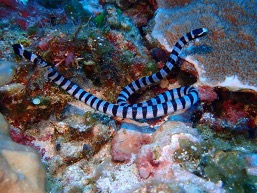
Pic 2 : A sea snake found around Orchid Island (Courtesy of Director Feng-Cheng Lung)
The dangers that go into filming and bringing these findings to light has actually recorded the process of ecological collapse. In the past, Taiwan proper had sea snakes. However, they’ve all but disappeared now due to overfishing. These days, the only place Taiwanese can find sea snakes are around Orchid Island. Unfortunately, there’s a risk that sea snakes might disappear from Orchid Island as well. This is due to an increased number of tourists destroying coral and impacting habitats, climate change creating changes in the distribution of rainwater and a lack of fresh water sources. Professor Wu hopes that by devoting himself to education, he can impart the importance of ecological sustainability to the children of Orchid Island.
Using Taboos to Protect the Environment. Riding the Current and Wind to Cross the Ocean
Through Professor Wu’s teachings that employ a geographical and biological perspective, more people now understand that many of Orchid Island’s precious plants and animals get there via the Kuroshio Current. This has turned Orchid Island into a unique ecological link between Taiwan and the Philippines. Moreover, through the “Tribal Superman's Ark Project” (Note 2) , Orchid Island has become an ecological sanctuary. Actually, most of the credit goes to elderly residents that have said rare plants and animals are possessed by evil spirits. These taboos and fears have become traditions that play an important role in protecting the natural environment of Orchid Island.
You need to first have a basic grasp on geography and ocean currents if you want to get a deeper understanding of the show’s individual episodes, “A Gift from the Kuroshio,” “Message from the Kuroshio,” “Butterfly across the Sea,” “Fantastic Rafting of the Ball-back Weevils,” and “Fate of Island Animals Is Very Different.” The Kuroshio Current starts in the Philippines, then passes by Taiwan, Orchid Island, Green Island and finally Japan. Many life forms originating relatively near the equator have spread north via this current. For example, the ligneous plants found in the coastal forests of Banana Bay, Taiwan, are the same as 57% of the ligneous species found in the Philippines and 50% of those in Malaysia. Back on NTNU’s campus, Professor Wu’s voice filled with excitement when he said that the Barringtonia asiatica before us and the Hernandia nymphaeifolia seen in the show are classic “seafaring plants.” In addition to plants getting to Taiwan via the Kuroshio Current, tiny insects can make the incredible journey across the ocean by burrowing inside floating fruit, riding the current as if sitting in a magical boat. As long as these creatures are resilient enough, they can take root in Taiwan, and even slowly evolve to become endemic local species.
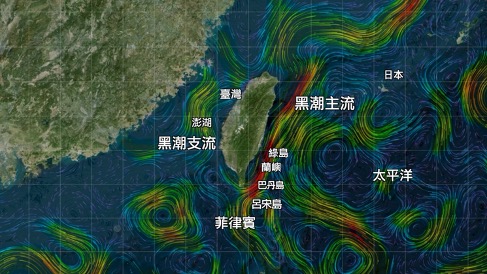
Pic 3: The Kuroshio Current (Courtesy of Professor Sen Jan)
Seeing Taiwan’s Diversity through Butterflies
There’s a saying in Chinese that goes, “Wherever there are flowers, there are butterflies.” In the past, Taiwan has been called the “Butterfly Kingdom.” There are a diverse array of butterflies found in Taiwan’s middle and high altitude mountains that include species from Indochina, Yunnan and Sichuan, China as well as the Himalayas.
The show touches upon the controversy between eastern and western academics regarding the Troides magellanus. This butterfly was thought to have been endemic to only the Philippines. The big mystery in any case was how the butterfly has also been spotted on Orchid Island.
The fact that there are nearly 30 types of butterflies in the Troides family helps explain this mystery. Moreover, there are only two types of Trodies butterflies that have a pearly spot on their back wing. One is the Troides magellanus, which is endemic to the Philippines. The other shows up only on Pulau Buru, Indonesia. When the rare Trodies magellanus appeared on Orchid Island, it left academics scratching their heads. Luzon, the northern most island of the Philippines, is still quite far away from Orchid Island. However, there are actually lots of small islands in-between Luzon and Orchid Island. The Trodies magellanus could have taken flight on some seasonal winds heading north. The happy ending to this “island hopping vacation” might just have been settling down on Orchid Island, Taiwan.
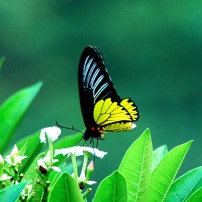
Pic 4: The Trodies magellanus (Courtesy of Professor Yu-Feng Hsu)
Professor Wu mentioned that to find the answer to this mystery, Professor Yu-Feng Hsu led a team back to the northern Philippine island of Itbayat. The crew finally found their answer after conquering the island’s foreboding rocky face and climbing ashore. Both the plants and animals found on the island were almost identical to the ones on Orchid Island. Therefore, the team determined that Orchid Island is in fact the latest stomping grounds for the Trodies magellanus. The movement of butterflies is a prime example of ecological balance and harmony.
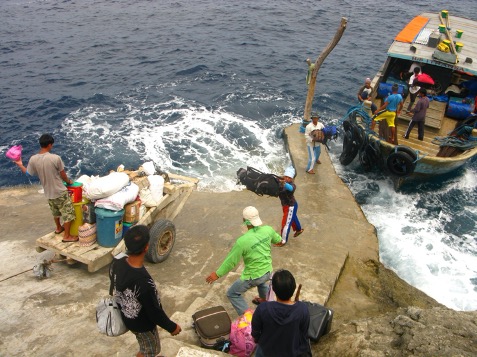
Pic 4: Conquering the foreboding rock face on the Philippine island of Itbayat while conducting ecological research. (Courtesy of Professor Yu-Feng Hsu)
International Taiwan-Philippine Cooperation. Exchanges on Ecological Conservation
Professor Chung-Hsin Wu has researched bat ecology for many years. He has discovered that pesticides and environmental degradation have had a severe impact on the habitats of many animals. Because of his passion and desire to create wellbeing for animals, Wu was asked to join the “Task Force on Systemic Pesticides of the International Union for Conversation of Nature.” Currently, Taiwan only has two academics in this group. In recent years, Professor Wu has traveled to the Philippines quite often to participate in ecological conservation exchanges with the local government and other groups
Professor Wu hopes that through his show, Discovering the South of the Frontier, more people will realize that Taiwan is full of “recent arrivals,” life that has crossed the ocean to get here. These “recent arrivals” include plants taking root in Taiwan’s forests, animals soaring overhead and creatures swimming through the ocean. If you’re wondering how everything in nature can coexist in harmony, you should watch Professor Wu’s show. You’re certain to have a different perspective about what life and sustainability are all about.
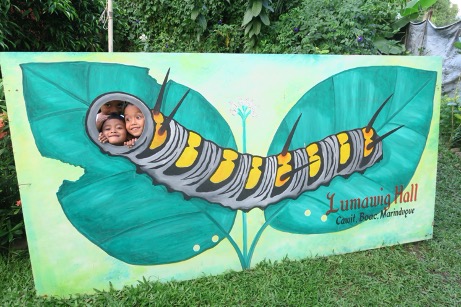
Pic 6: Marinduque, Philippines Butterfly Conservation Center (Courtesy of Professor Chung-Hsin Wu)
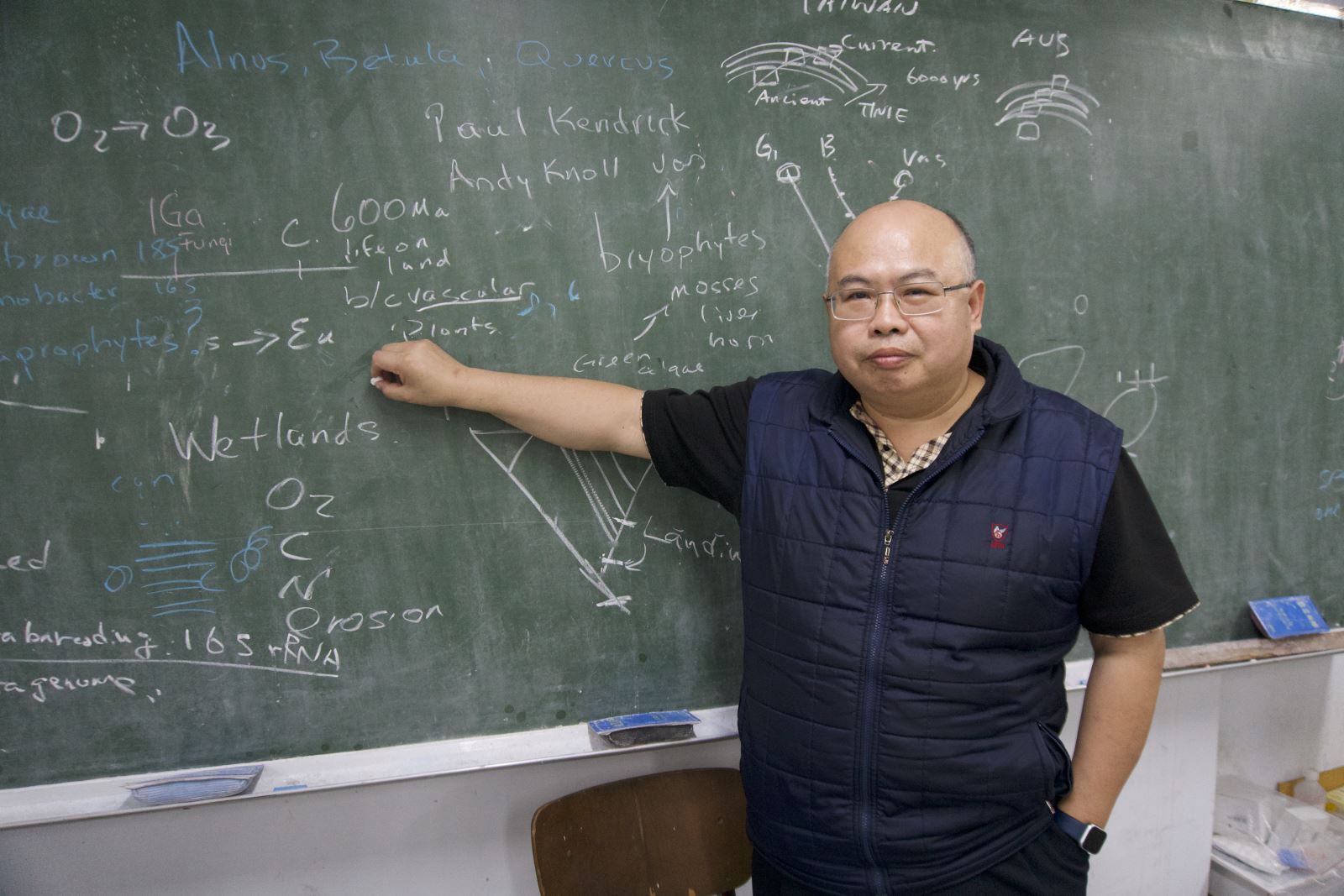
Pic 7: Professor Chung-Hsin Wu Passionately Discussing Ecological Research
- Note 1: The “local experts” are the guides that led our filming crew were usually local elders or academics familiar with the terrain.
- Note 2: A team of NTNU researchers formed the “Tribal Superman's Ark Project” to provide top-notch science education to local students. During this project, the connection between indigenous culture and science became quite apparent. In the future, the project will create a “Superman’s Ark,” a boat adorned with indigenous imagery. This will encourage these students to become environmentalists and global citizens interested in protecting ecological diversity.
(1).png)
Pic: Introduction of the columnist, Pei-lin Lin